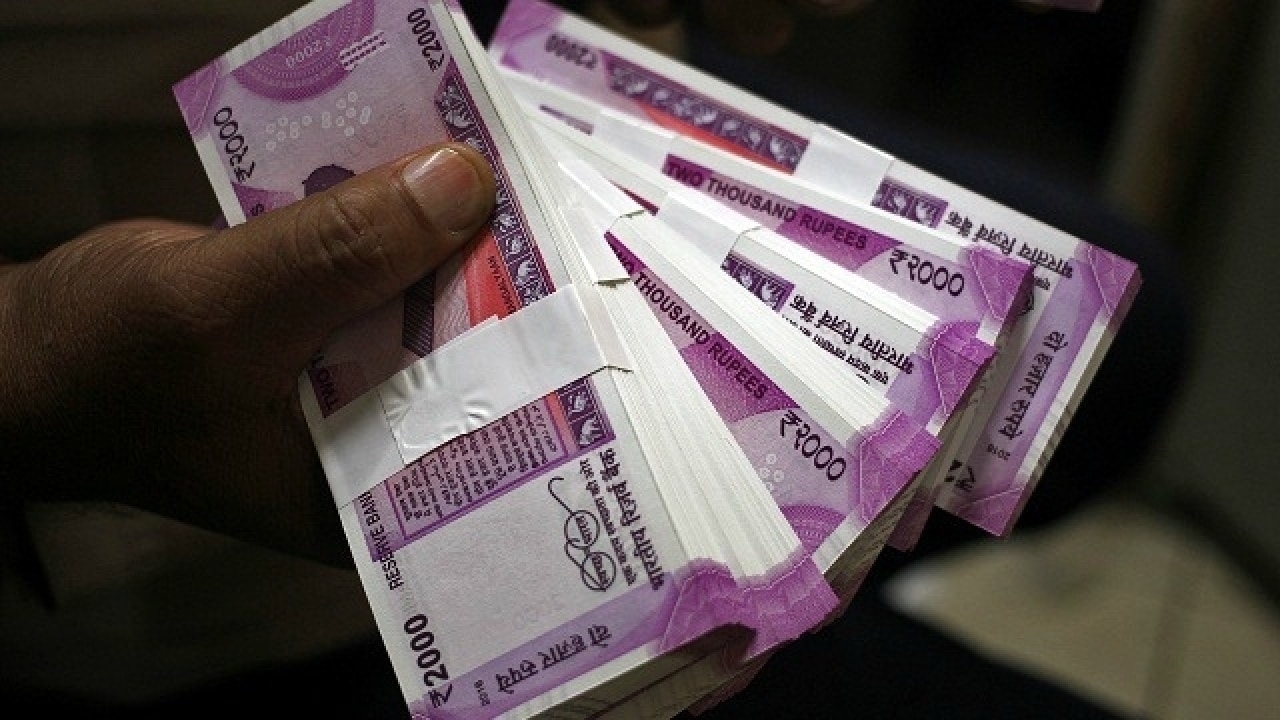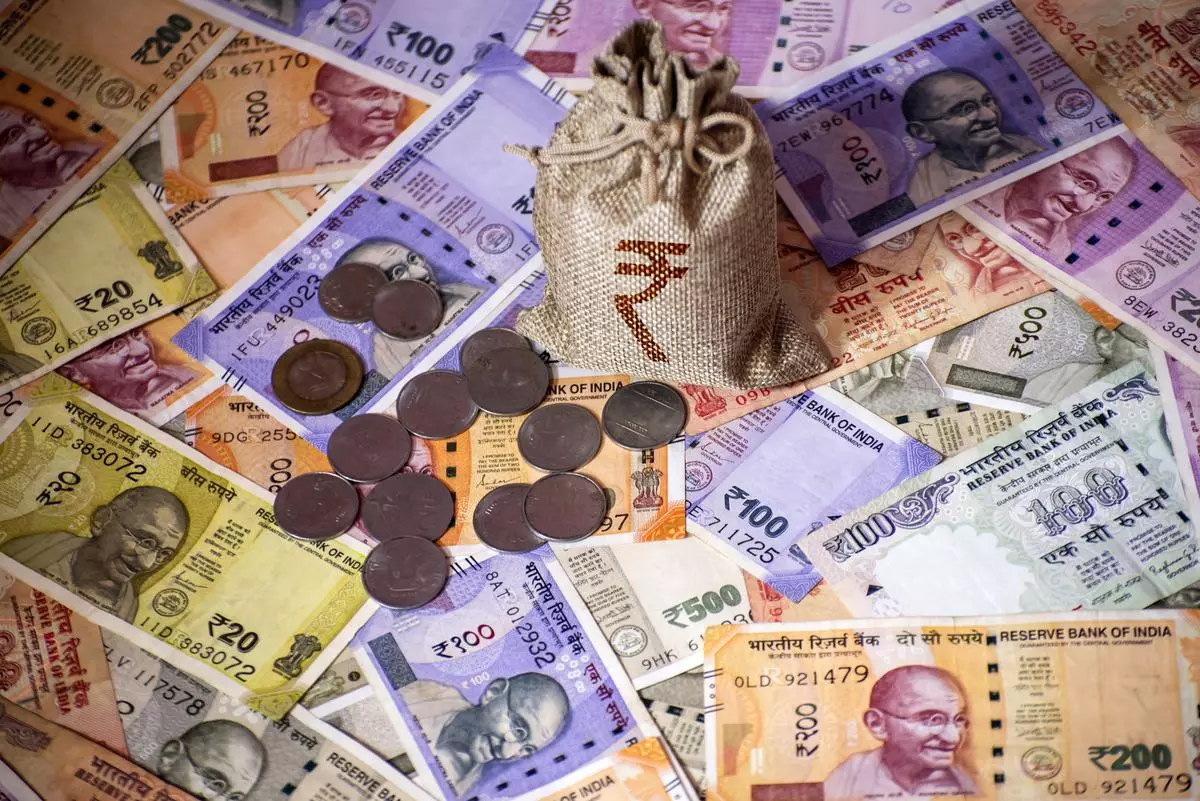Centre May Cut H2 Market Borrowings on NSSF Boost 2023

Centre May Cut H2 Market Borrowings on NSSF Boost 2023
According to a senior official on Thursday, the Union government would likely reduce its market borrowings in the second half of the current fiscal year from the level anticipated before and depend more on a growing tiny savings purse to cover the forecast fiscal deficit.
Strong modest savings accumulation and a recent spike in inflation, which may keep interest rates high for a while, are the driving forces behind the decision.

For FY24, the government planned to borrow 15.43 trillion rupees in total market borrowings, of which 8.88 trillion are being borrowed in the first half.
The Centre has borrowed 60% of its borrowing objective in the first half and the remaining 40% in the second during the past few years. Typically, states borrow a bigger portion of their H2 demand.
Increased use of National Small Savings Schemes (NSSF) would assist to reduce borrowing costs and the returns on government securities (G-secs).
According to the official, 34% of the budget’s objective of Rs 4.09 trillion in net modest saving receipts for FY24 has already been met.
According to the official, net small savings receipts increased by 48% year over year in Q1FY24 as opposed to just 9.9% in the same quarter previous year.
Various little savings plans are concerned. Up till the end of July of this fiscal year, the Senior Citizens Scheme (SCSS) receipts increased 187% year over year to Rs 57,283 crore.
Similar to this, 1.58 million new accounts created by women under the recently introduced Mahila Samman Savings Certificates initiative brought in Rs 9,611 crore till mid-August of the current fiscal, with an average deposit of Rs 60,829. According to the source, “Given this scenario, the government may rejig the H2FY24 borrowing to further reduce stress in the market.”

The government wants to keep the yield on the benchmark 10-year bond below 7%, but it has been hovering at 7.18% for the past week.
To provide a secure and certain retirement income in old age, the Centre quadrupled the maximum contribution under the SCSS to Rs. 30 lakh in the budget for FY24. Additionally, the programme gives older residents an interest rate that is far more alluring than the 7.5% average supplied by the best public sector banks. Currently, the SCSS earns an annual interest rate of 8.2%.
The official indicated, without specifying by how much, that NSSF may get more funding than intended in FY24 based on current patterns.The government planned for the offtake from the NSSF to increase from Rs 3.96 trillion in FY23 to Rs 4.71 trillion in FY24 in the FY24 Budget. As states no longer utilise these funds, the Centre is essentially the only recipient of NSSF deposits to pay the budget deficit.
The states’ market borrowings overall have been much lower than their budget announcements over the past two years because of the front-loading of tax devolution and the special, larger capex loans since FY23.
In the state government securities (SGS) auction held on August 22, 2023, seven state governments raised Rs 84 billion, or about half of the amount predicted for the week in the Q2 FY2024 auction schedule.

The weighted average cut-off of the SGS only slightly decreased to 7.48% in the auction held on August 22, 2023, from 7.49% in the last weekly auction, despite the sequential decline in the amount issued and the weighted average tenor to 11 years from 13 years, according to Icra. On August 22, 2023, the difference between the 10-year SGS cutoff yield and the old 10-year G-sec yield (7.26 GS 2033) decreased to 27 bps from 29 bps the previous week.
In an unexpected but financially strategic move, the Centre is considering reducing its market borrowings for the second half of the fiscal year 2023.
This decision comes in the wake of a robust inflow from the National Small Savings Fund (NSSF). The maneuver aims to leverage domestic savings to finance fiscal needs, while potentially reducing the cost of debt.
The National Small Savings Fund (NSSF) is a government-backed savings instrument that allows the Centre and States to finance their fiscal deficit directly from the savings of the general populace. Typically, the Centre borrows from the NSSF at rates that are slightly more advantageous than market rates.
On the other hand, market borrowings are usually made through the issuance of government securities and are dependent on market conditions, which are susceptible to fluctuations.

Recent months have seen an uptick in inflows to the NSSF due to a renewed faith in government-backed savings schemes, influenced by macroeconomic stability and lower inflation rates. Increased participation from retail investors, perhaps wary of stock market volatility, has also contributed.
NSSF rates, which are relatively stable, offer a lower cost of borrowing compared to market rates, which have been somewhat volatile in the recent past.
Reducing market borrowings could help the Centre manage its fiscal deficit more prudently. Less borrowing from the market could translate to less pressure on yields, which could be beneficial for the economy.
Lower borrowing costs will reduce the interest burden on the government, enabling reallocation of funds towards infrastructure and social welfare projects.This move will offer the government more fiscal space, providing flexibility in its budget allocation.

With the Centre cutting back on its market borrowings, there will be a reduced supply of government securities, which might push the yields down.The reduced need for market borrowings may send a positive signal about the country’s fiscal health, which could be good for investor sentiment.
With less pressure on market yields, the interest rates for loans may not spike, providing stability for borrowers.With a well-financed government, public and social welfare projects may get a boost, which will, in turn, attract more investment into the economy.
While NSSF inflows are strong now, over-dependence could be problematic if the rates or inflows change unfavorably in the future.NSSF primarily targets small savers. If these funds are disproportionately used for government spending, questions about equitable financing could arise.

The Centre’s potential decision to cut its market borrowings for the second half of 2023, leveraging a strong inflow from the NSSF, represents a strategic financial move that could have multiple positive implications for the economy.
However, this approach also comes with its own set of risks and challenges that policymakers will have to navigate carefully. Nonetheless, if executed prudently, this strategy could set a precedent for effective fiscal management in the years to come.




